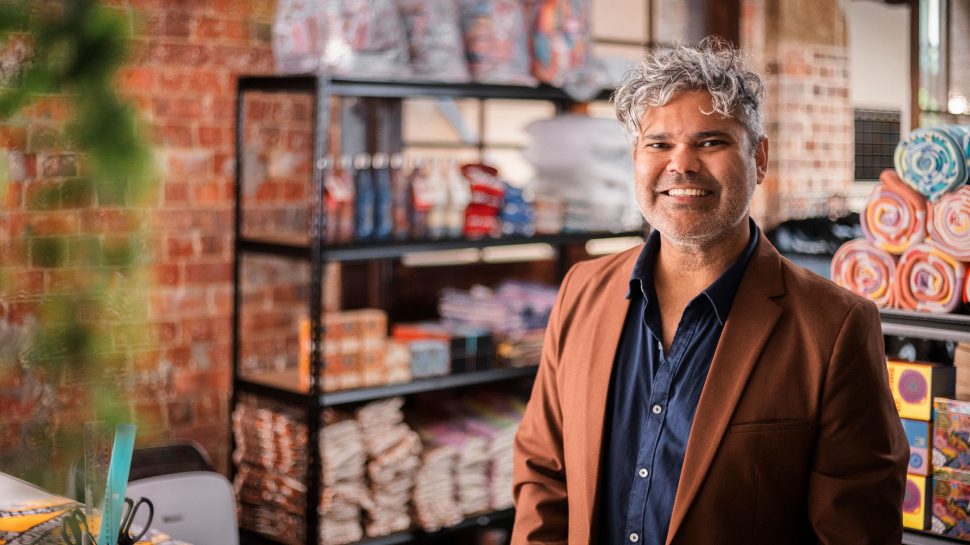Getting to know Gadigal: introducing the Traditional Place name of Sydney
A proud Gadigal (gad-i-guhl) Elder from the Eora (ee-orr-ah) nation, Uncle Allen Madden has long shared the Indigenous history of Sydney with others. Today, he’s delighted that Sydney’s Traditional Place name—Gadigal—can now also be shared with others when addressing letters and parcels through Australia Post.
The story behind the Traditional Place name, Gadigal
“Gadi comes from Cadi (kad-i), which is our name for the grass trees we used to make weapons,” explains Uncle Allen, “And Gal (guhl) means people, so we are the people of the Cadi—Gadigal.”
The Gadigal people are one of seven clans from coastal Sydney who speak the same language and make up what is known as the Eora nation.
A much loved and respected figure who is often called on to give the traditional Welcome to Country at events, Uncle Allen is also a business owner and has been on the board of Sydney Foreshore Authority, the Central Coast Aboriginal Heritage and many others.
For him, having Traditional Place names acknowledged on Australia Post letters and packages is a great way to share knowledge and culture.
“It’s a really good idea,” enthuses Uncle Allen. “Some people just go by postcodes, but wouldn't it be more interesting to use the Aboriginal and Torres Strait Islander name that you could be proud of?”
For Uncle Allen, having everyone use Traditional Place names brings us closer together. “We’re all Australians and this is our history,” he says. “You have to know where you come from to know where you’re going.”

Introducing Traditional Place names at Australia Post
To mark NAIDOC Week in November 2020, Australia Post updated the addressing guidelines to include Traditional Place names—a step forward in acknowledging and celebrating the long-lasting connection of Indigenous Peoples to the land.
Following on from Gomeroi (guum-a-roy) woman Rachael McPhail championing the idea on social media, we have seen an outpouring of interest and support for the initiative from the public.
To build on this important initiative, Australia Post has created an empowering video on what Traditional Place names mean to Indigenous peoples—in their own words.
The video features Indigenous Elders, like Uncle Allen, as well as Indigenous community leaders and business owners, sharing and celebrating Indigenous language and inspiring everyone to use Traditional Place names.
For Uncle Allen all Australians using Traditional Place names when addressing letters or parcels through Australia Post is part of embracing Indigenous culture.
“Using Traditional Place names is all about teaching Australians about our culture,” says Uncle Allen. “This is our place and it's all about letting people know where they are and who we are.”
Sharing names, sharing knowledge

Sharing knowledge and culture is something that’s close to the heart of Desmond Campbell, proud Gurindji (goo-rin-jee) and Ngalakan (na-la-kun) man and CEO of Gadigal’s Welcome to Country.
“Welcome to Country is a not-for-profit organisation whose purpose is to address economic and employment outcomes for Aboriginal and Torres Strait Islander communities,” explains Desmond.
”We celebrate people and culture in our business by having 75% Indigenous-identified employees working with Indigenous entrepreneurs, which allows them to stay on Country to continue practicing their culture.”
For Desmond, embracing Traditional Place names aligns with everything they stand for.
“It's important to use Traditional Place names in Australia because it's a way of embracing a language and culture that's over 50,000 years old. We use Traditional Place names in our business and packaging by allowing the customer to choose to use Traditional Place names when they send packages. We estimate 50% of our customers choose to do that.”
A marketplace for Indigenous experiences and products, Welcome to Country shares culture every day. But Desmond sees the power in embracing the use of Traditional Place names when addressing parcels and letters through Australia Post to spread Indigenous culture even further.
“Something that has stayed sacred is now shared with the world,” says Desmond. “Australia Post acknowledging Traditional Place names all around Australia brings language and culture into people's everyday lives.”
Embrace your place: start using Traditional Place names on your parcels today
To find an area’s Traditional Place name, check the map on the AIATSIS website or get in touch with Aboriginal and Torres Strait Islander Land Councils or Cultural Centres in your area.
Using Traditional Place names
Using Traditional Place names
Here’s a handy guide to addressing mail and parcels with Traditional Place names.



